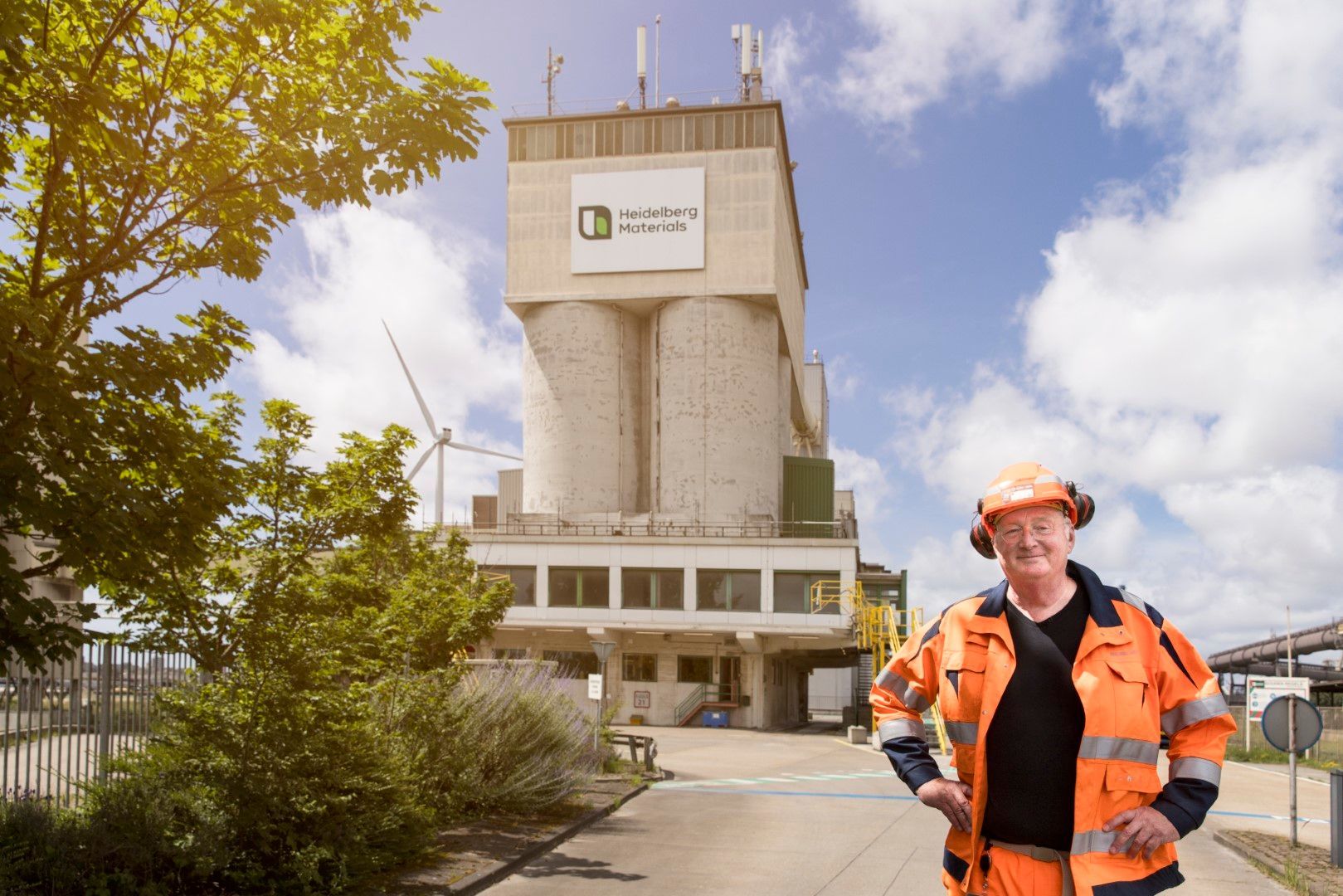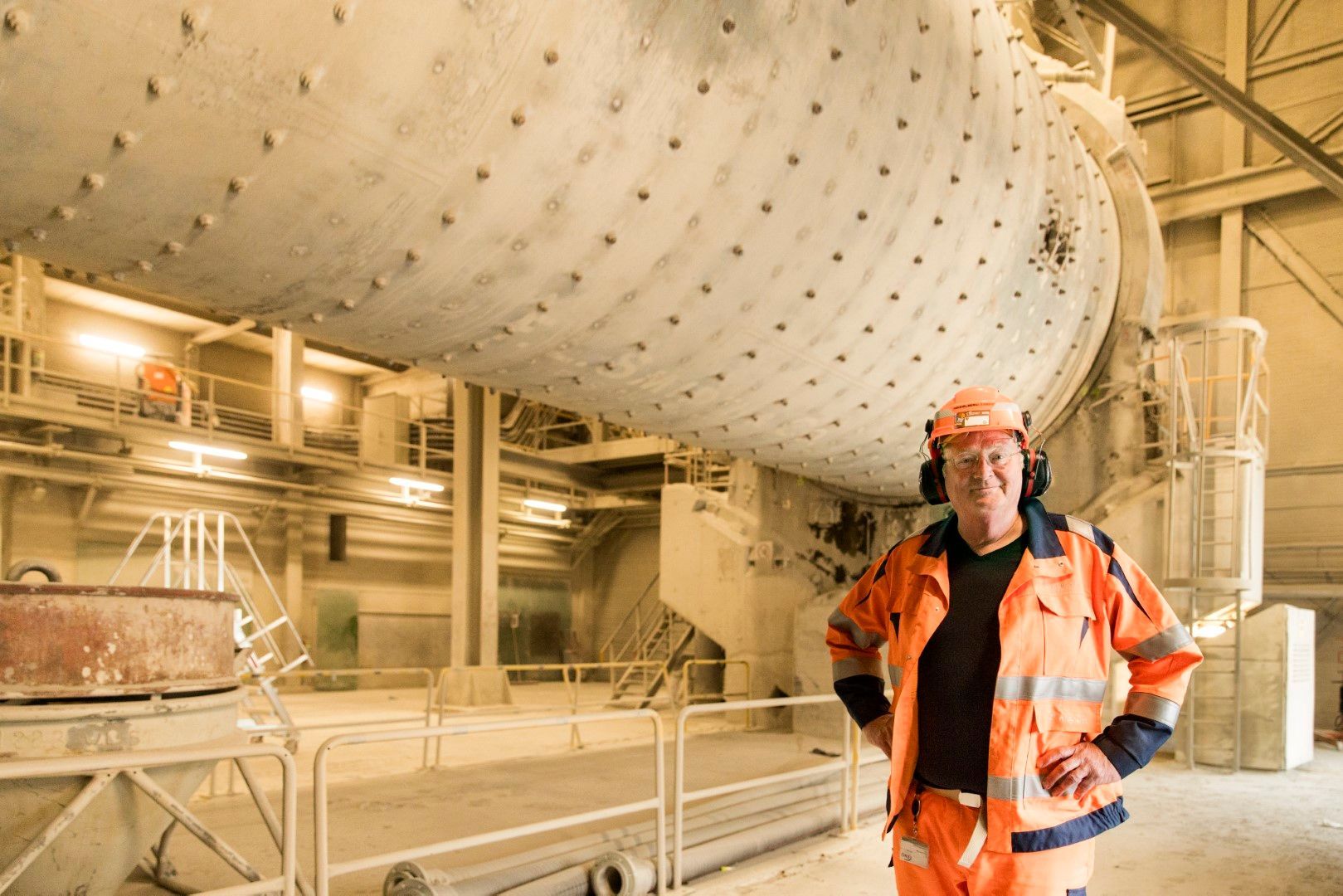Grinding it – How Cement Production stabilizes the Power Grid
A gigantic rotating drum, lined with hardened steel, grinding blast furnace slag and clinker into fine cement powder at deafening volume and searing heat: Heidelberg Materials’ IJmuiden plant is a place where it’s loud, hot, and deeply industrial – exactly the kind of setting where every kilowatt counts.

Inside this highly automated facility, 40 people keep the operation running 24/7 – but the true workhorses are the massive ball mills consuming most of the site’s electricity when in full swing.
What sets this plant apart isn’t just its 1 million tonnes of cement produced annually or the huge amount of tonnes of blast furnace slag it stores on-site to minimize waste from the neighboring steel plant. It’s also the fact that its ball mills is now part of the Netherlands’ balancing reserves for the power grid, providing upward mFRR ("Noodvermogen"). Upward mFRR is tendered daily by the Dutch transmission system operator and helps stabilize the grid by having large power users temporarily reduce demand when requested.

“Despite our high level of automation, production management is complex here,” explains Theo van de Raadt, Plant Controller at IJmuiden. “We have to consider cement sales forecasts, energy prices, maintenance – and now also our mFRR nominations. But everything is integrated into our system so that we can plan ahead.” The plant’s process management system evaluates whether it can commit its ball mill’s load to the mFRR tender, taking into account that downtime is critical: only two days’ worth of sales are produced on-site at any time.
Heidelberg Materials joined Next Kraftwerke’s Virtual Power Plant in January 2024, following a recommendation from its German headquarters. Installation was straightforward: “Our maintenance team installed the Next Box in the control cabinet. Now, if an activation signal comes in, it triggers a flashing light in the control room. But importantly, activation is entirely under our control – there’s no remote steering from outside.”
Initial tests showed it takes only seconds to ramp the ball mill down, while ramping back up takes a couple of minutes – all without any negative effect on daily operations. “We only nominate through Next Kraftwerke’s online platform when it makes sense: service hours, spot prices, and maintenance all factor in. And since Dutch mFRR currently still requires 24-hour nominations, we plan carefully.”
Financially, the project is also designed for sustainability. While Theo doesn’t share figures yet, the expectation is that grid reserve payments will offset the cost of integration quickly and generate additional value for many years.
Looking ahead, Heidelberg Materials is considering nominating more mills on-site in IJmuiden – and its sister plant in Rotterdam will also join the Virtual Power Plant in summer 2025 with another 8 MW. If Dutch grid operators shift to 4-hour blocks in the bidding system, participation could become even more flexible, with the potential to add downward mFRR in the future.
“Industrial flexibility is a real asset and thanks to our cooperation with Next Kraftwerke, we were able to unlock its potential” Theo sums up. “It’s not just good for the grid. It’s also a way for us to optimize the plant from an economical perspective.”
Facts:
| Electric motor generates: | 11 MW |
| Provides Grid Flexibility | mFRR Up |
| Link to partner website: | Heidelberg Materials |
| More about Next Products: | Upward mFRR Energy Balancing |


